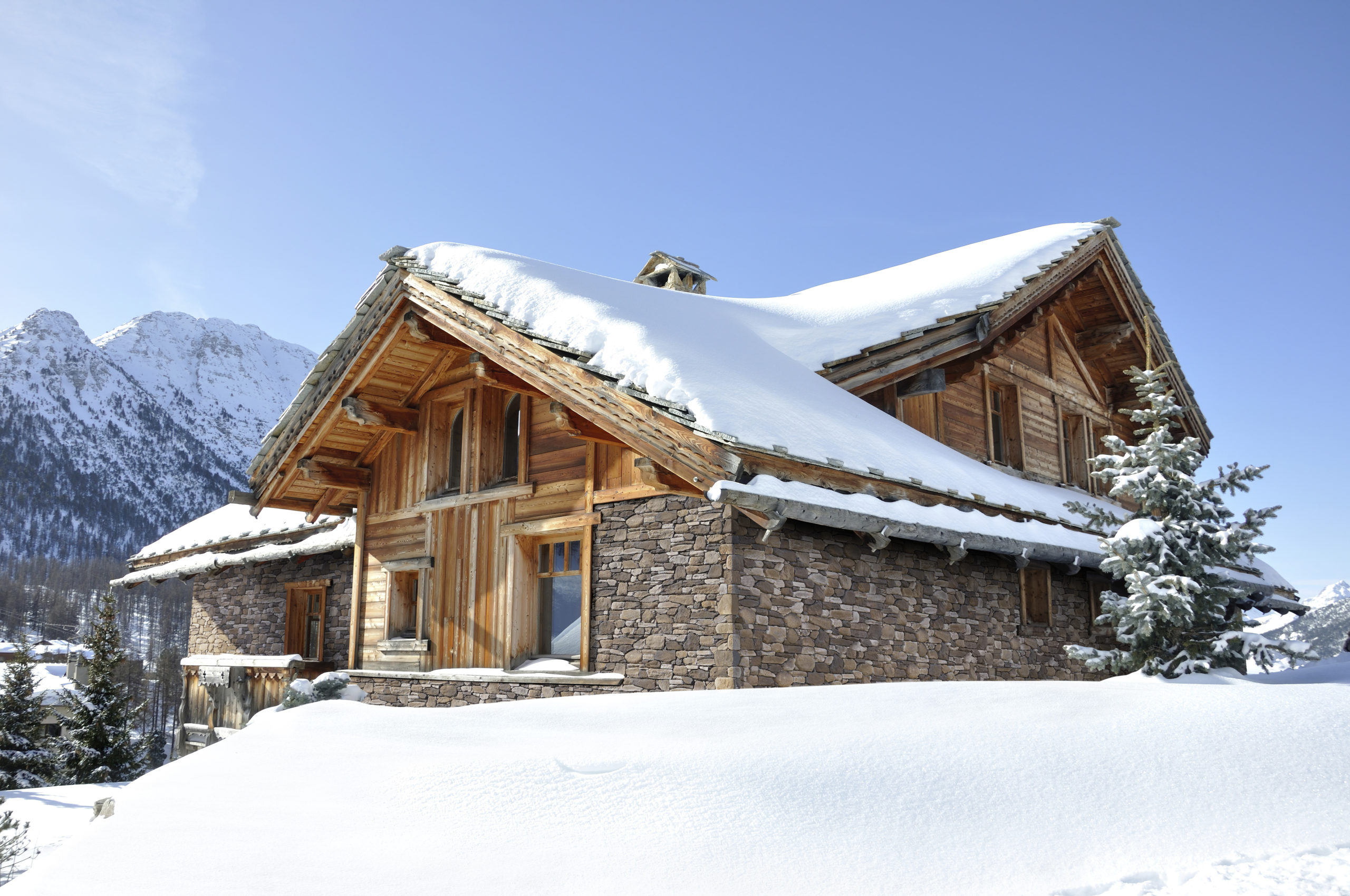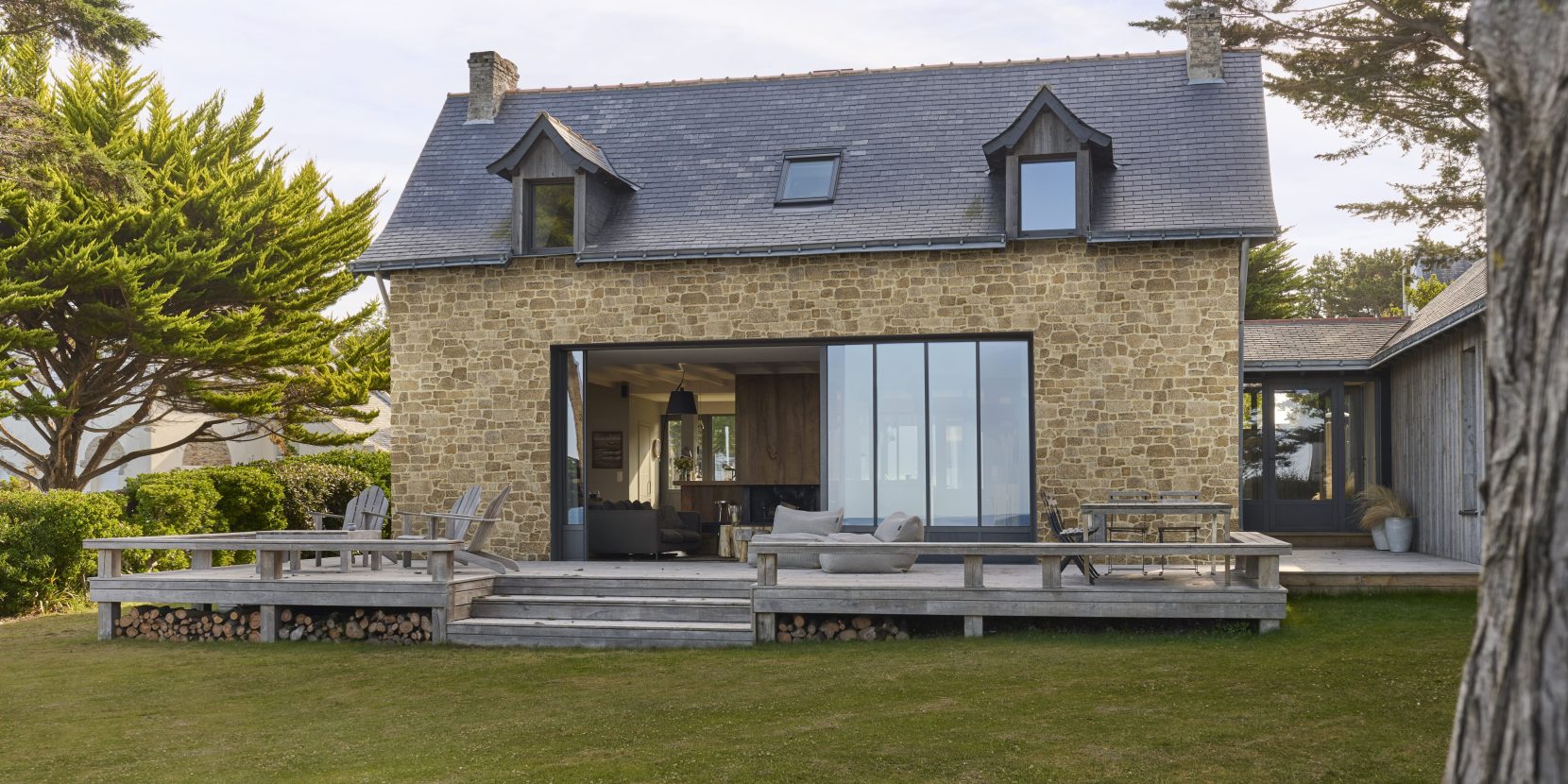A return to the architecture of traditional houses has become a necessity in a context where local resources and know-how are valued. These best practices, partly handed down through use, constitute a heritage rooted in the region, and a new source of inspiration for designing naturally resilient buildings.
This is reflected in facade cladding trends, with a pronounced taste for references to locally available materials. Here are some ideas for applying Orsol cladding in regional styles.
Collection Meulière, a nod to Parisian mansions
Millstone was the emblematic material of 19th-century and early 20th-century middle-class homes in the Paris region. It is also found in the richly ornamented villas of the Art Nouveau style. These characterful buildings are also known as meulières or maisons meulières.
Driven by its passion for stone, Orsol seeks to revive this unique character with its reconstituted stone solutions from the Meulière Collection. The result is perfect, with a product that’s reliable, resistant, more flexible and easier to install for Meulière house-inspired cladding.
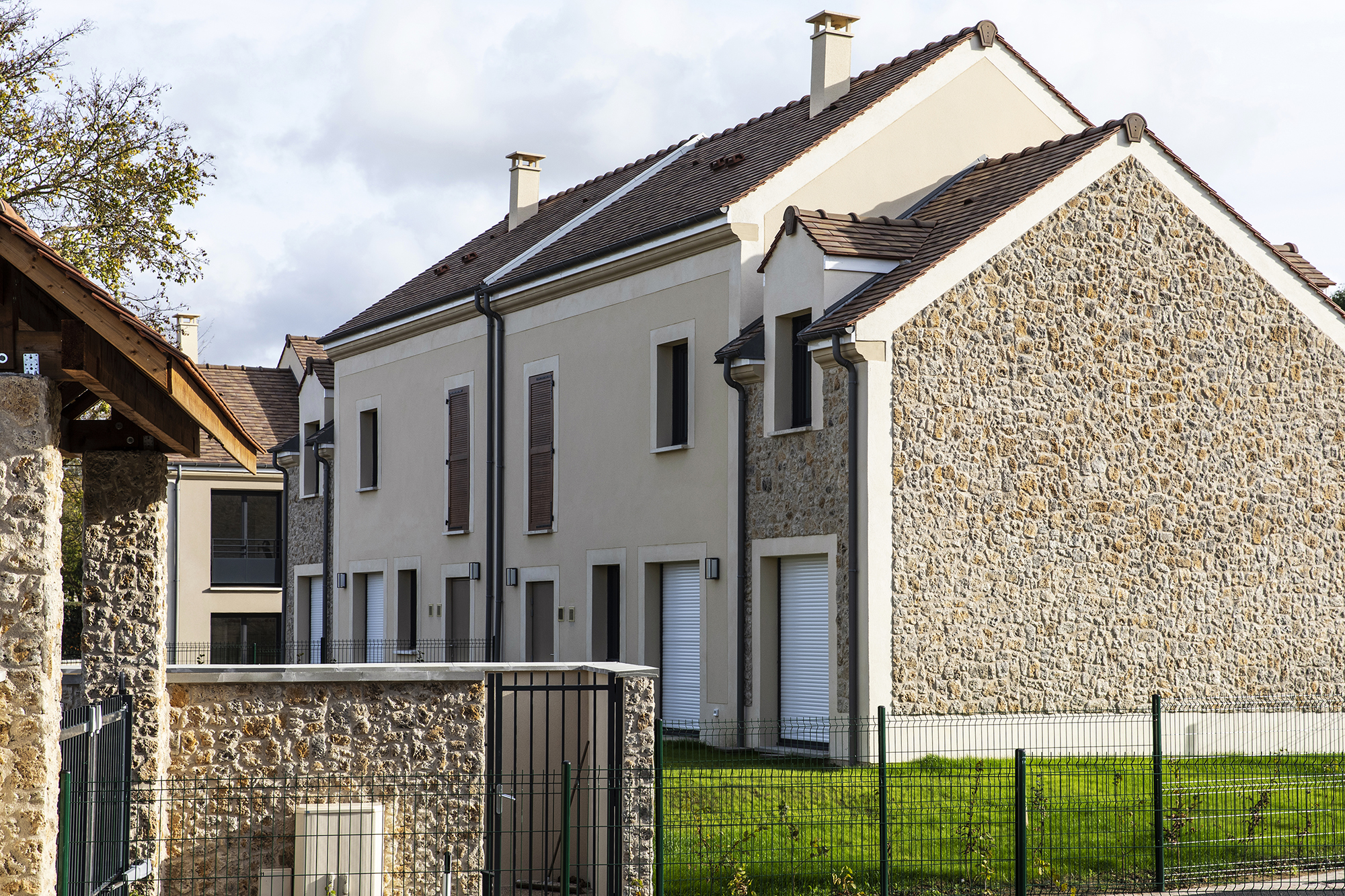
Collection Causse: dry stone in Quercy
The Quercy Basin, rich in limestone plateaux, also known as the Causses du Quercy, has given rise to a picturesque architecture, recognizable by its typical houses with adjoining turrets, corbelled tiles (génoise) and covered stoops (bolets). Dry limestone and its naturally ochre tones are inseparable from this style and, more broadly, from the architecture of traditional houses in the South-West.
Orsol’s Causse Collection takes up this singular aesthetic with reconstituted stone in elongated shapes with a fine grain and soft relief, available in natural, sienna or golden beige hues.
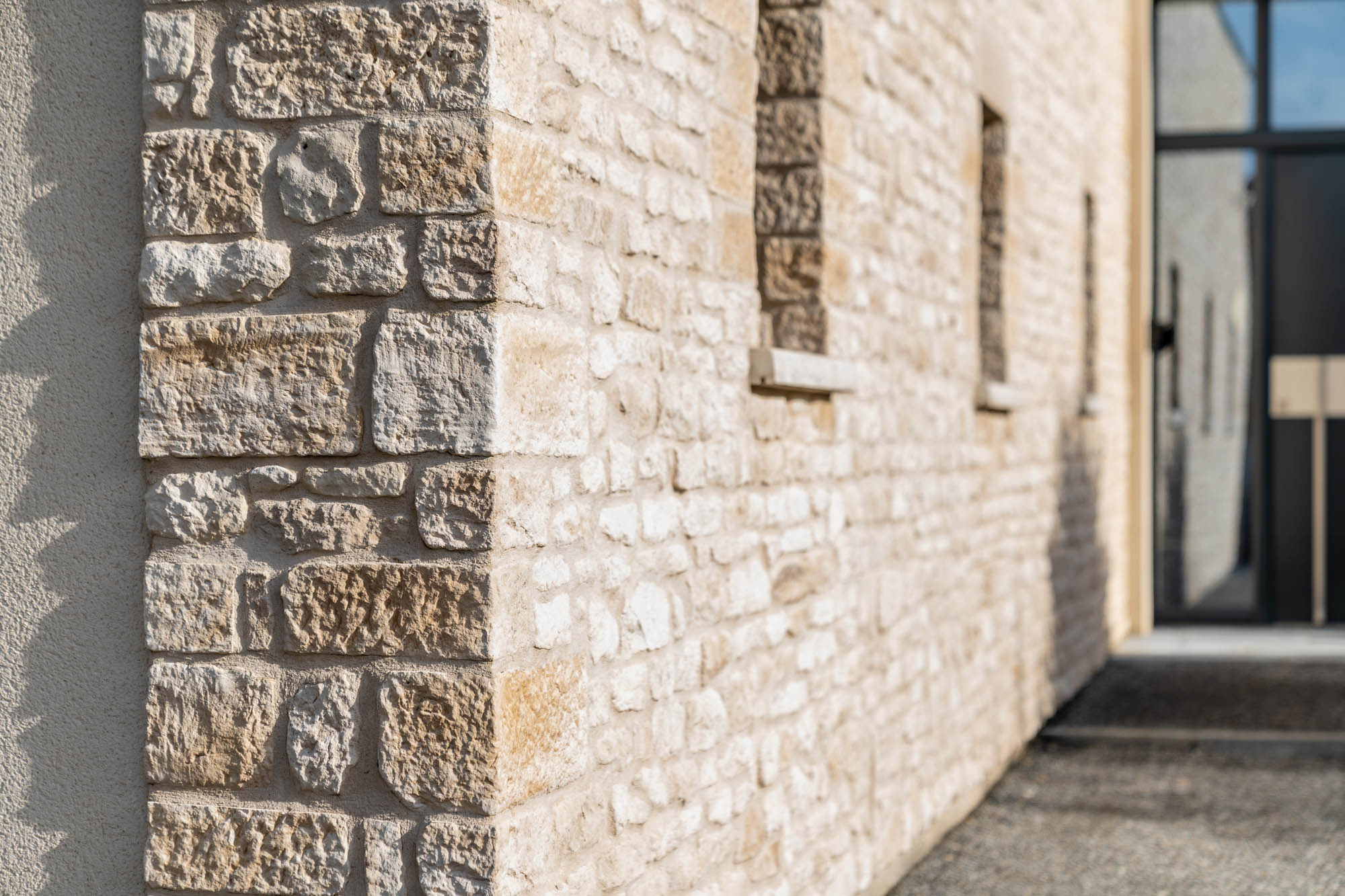
Tertus Collection: the stacked dry stones of Bonifacio
Corsica’s building tradition reflects the richness of its soils: schist on the Cap Corse peninsula, granite further south and limestone in the Bonifacio region. The local heritage includes exposed stone facades with dry stone dressings, sometimes dry-mounted without mortar.
To recreate this stacked look, also found on low walls and exterior walls, Orsol offers reconstituted stone cladding from the Tertus Collection, available in natural, shaded beige and golden beige tones.
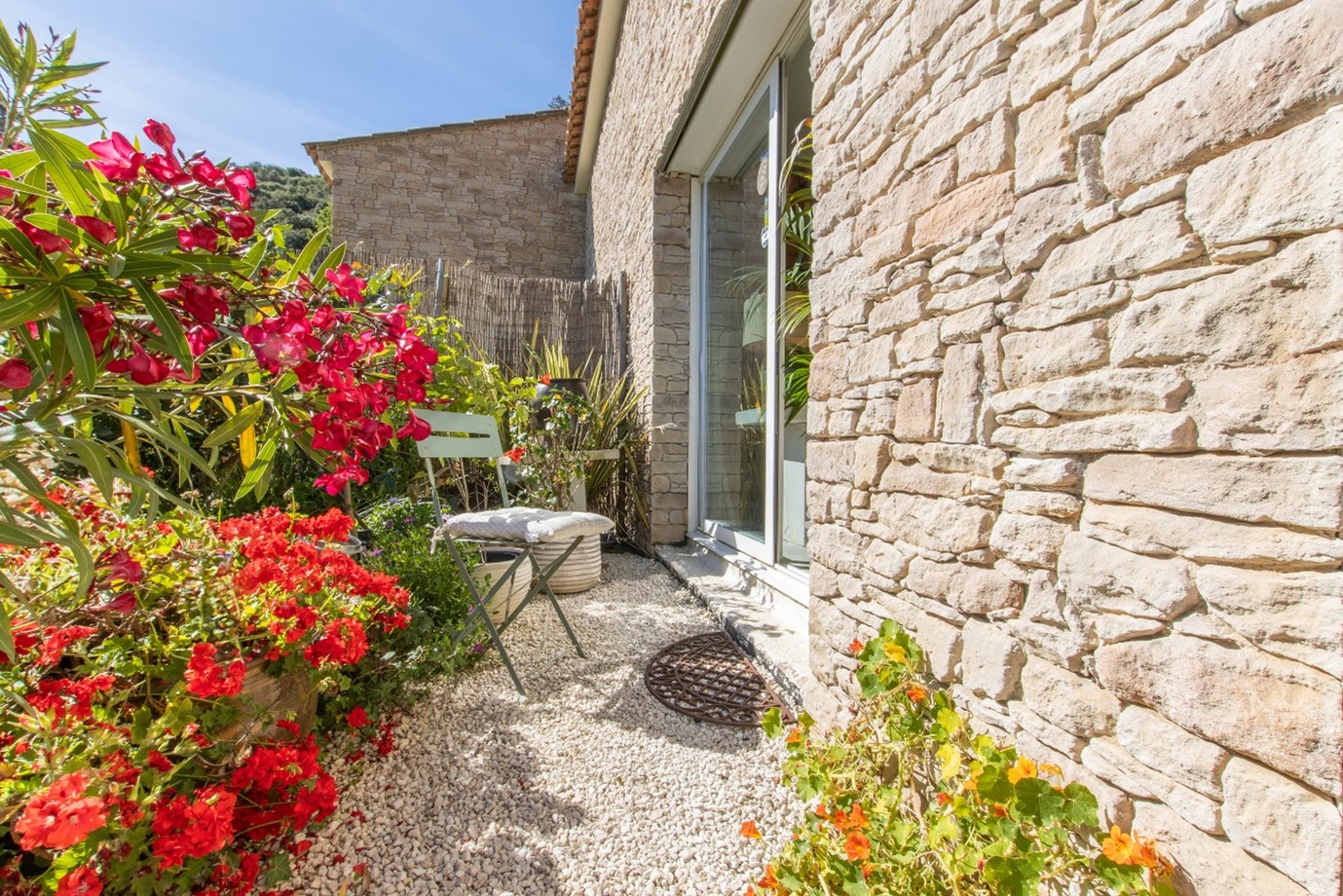
ROCA Collection: for mountain refuges
At high altitude, local people have made do with the resources of the land, mainly wood and stone. Although these materials are locally abundant, they are not necessarily readily available. Smaller stones may have facilitated transport and played a role in traditional mountain architectural styles. The use of stones in a wide variety of sizes also reflects the need to make the most of all available resources.
The Roca Collection reflects this approach to home architecture, with great variation in both the size of the stones and the shades of each of the reconstituted stones assembled on a ready-to-install lattice.
What about the granite of Breton houses and the shelters that line coastal paths? Orsol is currently working on the launch of a new Granite Collection in 2025 for the reconstituted stone facings of typical Breton houses.
